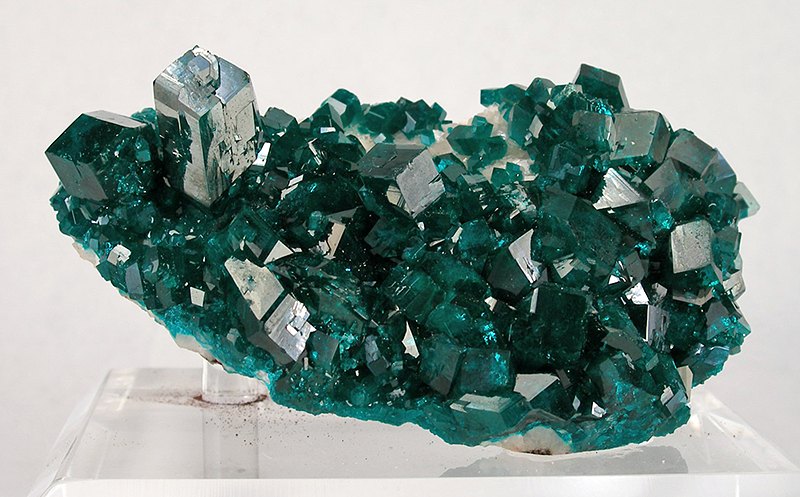Dioptase is a mineral highly coveted by collectors for exhibiting one of the most intense blue-green colors seen in nature. Dioptase forms beautiful 6-sided crystals with perfect cleavage planes which can be visible inside transparent crystals. The deep color of dioptase makes for stunning combinations with other minerals, such as white calcite, light blue chrysocolla or the bright orange lead mineral wulfenite.
Dioptase is a hydrated copper silicate mineral and is found as an alteration product in copper deposits. The deep green color comes from the copper in the chemical formula, which is also responsible for the color in many other minerals such as the blue mineral azurite and the dark red mineral cuprite.
Dioptase was first discovered in Kazakhstan, and was originally thought to be emerald. Though similar in color, dioptase is easily distinguishable from emerald in its rhombohedral crystal habit, perfect cleavage and hardness of 5, which is much softer than emerald. The hardness and cleavage of dioptase make it a relatively fragile mineral, so despite its remarkable color, it is not often used in jewelry. Other notable locations of dioptase include Arizona, Chile and the Democratic Republic of Congo, with the most famous specimens coming from the Tsumeb mine in Namibia.
Come see fantastic examples of Namibian dioptase for yourself at the Dice Mineralogical Museum on the first floor of North Hall, open from 12:30–4 p.m. on Wednesday, Thursday and Friday.









